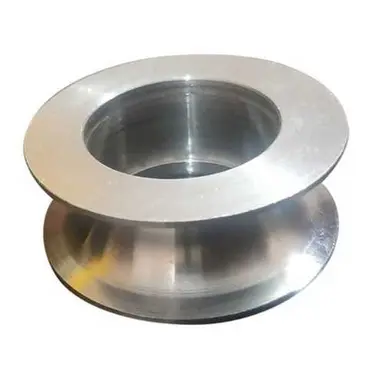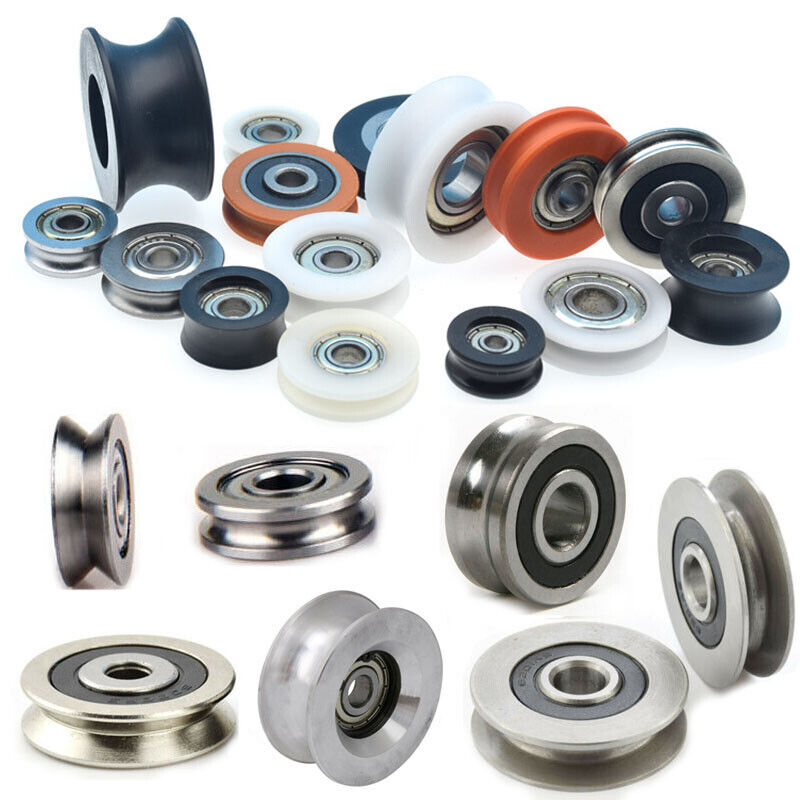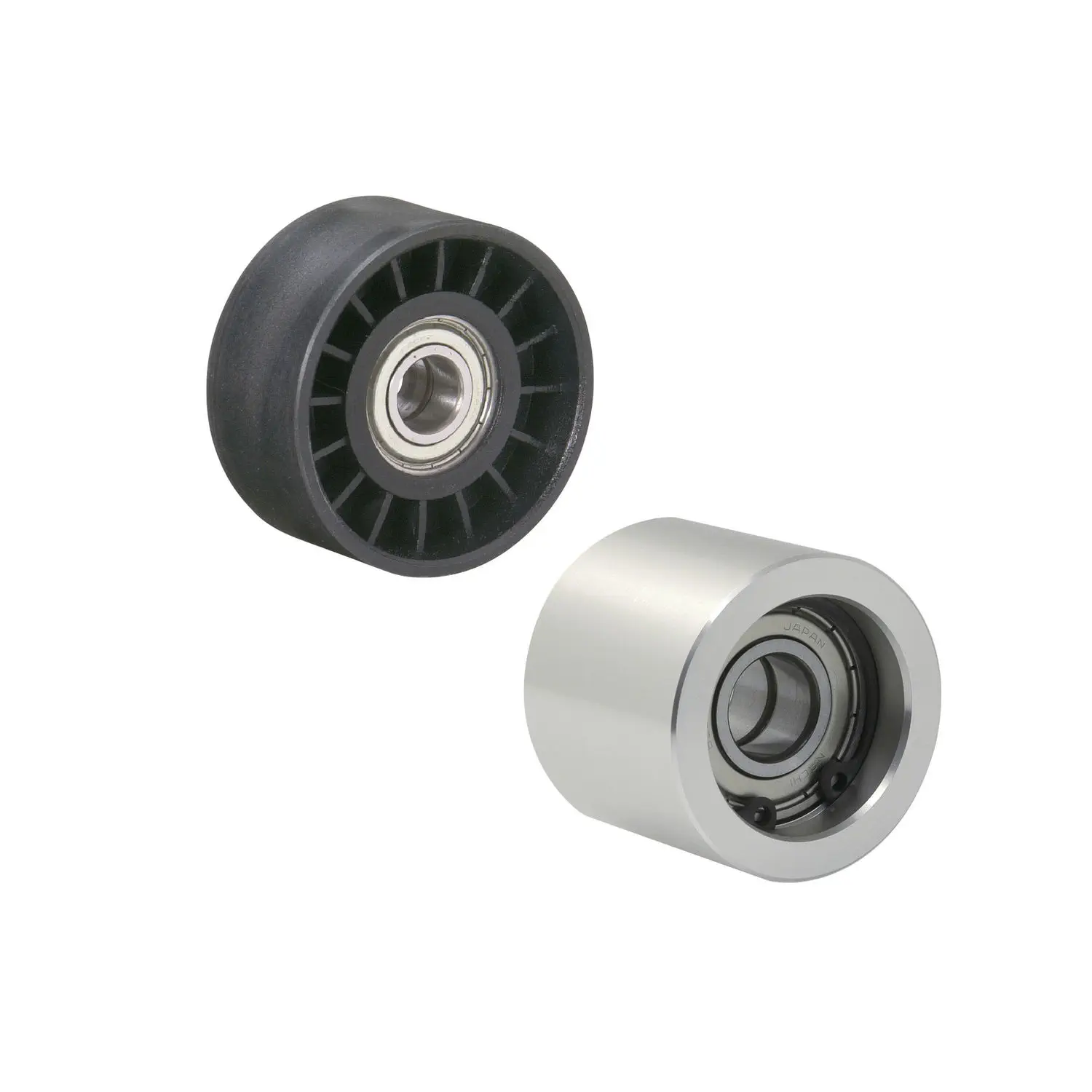Product Description
Product Description
Product Parameters
| Parameter of conveyor drum pulley | |||
| Type | Belt width | Standard diameter | Length(mm) |
| (mm) | (mm) | ||
| Length of pulley depends on the width of conveyor belt | 500 | 500 | Length of pulley
depends on the width of conveyor belt |
| 650 | 500~630 | ||
| 800 | 630~1000 | ||
| 1000 | 800~1150 | ||
| 1200 | 800~1150 | ||
| 1400 | 1000~1350 | ||
| 1600 | 1150~1600 | ||
| 1800 | 1150~1800 | ||
| 2000 | 1350~2000 | ||
| 2200 | 1600~2200 | ||
| 2400 | 1800~2400 | ||
Production Workshop
Application scenario
Our Advantages
FAQ
Q1. When can I get the price?
Usually we quote within 24 hours after we get your inquiry.
Q2: Could design and drawing the pulley for our special usage?
A: Of course, our professional engineer could design and drawing for you ASAP.
Q3:How to install the Ceramic Pulley Lagging?
A:We have experience of installation for 20 years, and could supply guidance for you by video.
Q4: How long is your delivery time?
A: Generally it is 5-10 days if the goods are in stock. or it is 15-20 days if the goods are not in stock, it is according to quantity.
Q5: Do you have foreign experience for Ceramic Pulley Lagging rubber sheet?
A: Yes, the ceramic lagging rubber sheet we manufactured have exported to Australia , South Africa , Brazil , etc.
Q6. How does your factory of regarding quality control?
A: To make sure customer buy good quality material and service from us. Before customer place order, we will send drawing to customer for approval. Before shipment, our QC staff will check quality 1pc by 1pc. Quality is our culture.
| Material: | Stainless Steel |
|---|---|
| Surface Treatment: | Baking Paint |
| Motor Type: | Frequency Control Motor |
| Samples: |
US$ 70/Piece
1 Piece(Min.Order) | Order Sample |
|---|
| Customization: |
Available
| Customized Request |
|---|
.shipping-cost-tm .tm-status-off{background: none;padding:0;color: #1470cc}
|
Shipping Cost:
Estimated freight per unit. |
about shipping cost and estimated delivery time. |
|---|
| Payment Method: |
|
|---|---|
|
Initial Payment Full Payment |
| Currency: | US$ |
|---|
| Return&refunds: | You can apply for a refund up to 30 days after receipt of the products. |
|---|

Can roller pulleys be retrofitted into existing conveyor systems for improvements?
Yes, roller pulleys can be retrofitted into existing conveyor systems to achieve various improvements. Retrofitting roller pulleys offers several benefits and can address specific operational challenges. Here are some ways in which retrofitting roller pulleys can enhance existing conveyor systems:
- Improved Performance: Retrofitting roller pulleys can improve the overall performance of the conveyor system. By upgrading to modern roller pulleys with advanced features, such as low rolling resistance, improved load distribution, or specialized coatings, the system can achieve better material handling, increased throughput, and reduced energy consumption.
- Enhanced Efficiency: Retrofitting roller pulleys can enhance the efficiency of the conveyor system. By replacing worn-out or outdated rollers with new ones, the system can operate more smoothly and reliably. Roller pulleys with precision bearings, reduced friction, or self-cleaning capabilities can minimize material jams, reduce maintenance requirements, and optimize the overall efficiency of material handling processes.
- Noise Reduction: Roller pulleys with noise-dampening features can be retrofitted to reduce the noise levels generated by the conveyor system. This is particularly beneficial in environments where noise reduction is a priority, such as warehouses located near residential areas or workplaces where a quieter atmosphere is desired.
- Increased Durability: Retrofitting roller pulleys can enhance the durability and longevity of the conveyor system. Upgrading to roller pulleys made from more robust materials or featuring improved corrosion resistance can extend the lifespan of the equipment, reducing the frequency of replacements and minimizing downtime due to maintenance or repairs.
- Compatibility with Upgrades: Retrofitting roller pulleys allows for compatibility with other upgrades or modifications to the conveyor system. For example, if the system is being upgraded with automation technologies, such as robotics or AGVs, roller pulleys can be retrofitted to ensure seamless integration and precise material handling between the conveyor system and the automated equipment.
- Cost-Effective Solution: Retrofitting roller pulleys is often a cost-effective solution compared to replacing the entire conveyor system. By selectively upgrading critical components, such as the roller pulleys, operators can achieve significant improvements in performance and efficiency while avoiding the expense of a complete system replacement.
Before retrofitting roller pulleys, it is essential to assess the compatibility of the existing conveyor system and ensure that the retrofitted components meet the specific requirements and constraints of the operation. Consulting with roller pulley manufacturers or industry experts can provide valuable guidance in selecting the appropriate roller pulleys and executing a successful retrofitting process.

What is the significance of proper roller spacing and alignment in roller pulley systems?
Proper roller spacing and alignment in roller pulley systems are of significant importance for the smooth and efficient operation of conveyor systems. Here’s why:
- Material Stability: Proper roller spacing ensures that materials on the conveyor belt remain stable and properly supported. When the rollers are appropriately spaced, the weight of the materials is evenly distributed, minimizing the risk of material spillage or uneven loading. This improves the overall stability of the conveyed items, reducing the chances of jams, blockages, or damage during transportation.
- Belt Support: Correct roller spacing provides adequate support to the conveyor belt. Insufficient roller spacing can result in excessive sagging or stretching of the belt, leading to increased friction, wear, and potential belt misalignment. On the other hand, excessive roller spacing can cause the belt to become taut, leading to increased tension and potential damage. Proper roller spacing ensures optimal belt support, contributing to its longevity and reliable performance.
- Prevention of Material Buildup: Incorrect roller spacing can result in material buildup between the rollers or along the edges of the belt. This buildup can cause material accumulation, belt slippage, or even belt damage. By maintaining proper roller spacing, the risk of material buildup is minimized, ensuring smooth material flow and preventing operational disruptions.
- Belt Tracking: Proper roller alignment plays a crucial role in belt tracking. Misaligned rollers can cause the belt to veer off-course, leading to belt mistracking, potential damage, and increased wear. Well-aligned rollers promote consistent belt tracking, ensuring that the belt stays centered and properly guided along the conveyor path.
- Reduced Friction and Wear: When roller pulleys are correctly aligned, the contact between the belt and the rollers is optimized, reducing friction and wear. Misaligned rollers can cause the belt to rub against the edges or surfaces of the pulleys, resulting in increased friction, heat generation, and accelerated belt wear. Proper roller alignment minimizes these issues, extending the lifespan of the belt and reducing maintenance requirements.
- System Efficiency: Proper roller spacing and alignment contribute to the overall efficiency of the conveyor system. When materials flow smoothly, without jams or interruptions caused by improper spacing or misaligned rollers, the system can operate at its designed capacity. This improves productivity, reduces downtime, and enhances the overall performance of the material handling process.
In summary, proper roller spacing and alignment are critical for maintaining material stability, providing adequate belt support, preventing material buildup, ensuring proper belt tracking, reducing friction and wear, and enhancing the efficiency of roller pulley systems. Regular inspection and adjustment of roller spacing and alignment are essential maintenance practices to optimize the performance and reliability of conveyor systems.

How does the design of rollers on a roller pulley impact its performance?
The design of rollers on a roller pulley plays a crucial role in determining its performance and effectiveness in conveyor systems. Various design factors can impact the performance of rollers. Here are some key aspects to consider:
- Roller Material: The choice of roller material affects factors such as durability, friction, and resistance to wear. Common materials used for rollers include steel, stainless steel, plastic, and rubber. Each material has its own advantages and suitability for specific applications.
- Roller Diameter: The diameter of the roller affects the contact area with the conveyor belt. Larger diameter rollers distribute the load over a larger surface area, reducing the pressure on the belt and minimizing the risk of belt damage. Smaller diameter rollers, on the other hand, may be suitable for applications with limited space or for conveying smaller materials.
- Roller Surface: The surface of the roller should be designed to reduce friction and promote smooth material movement. It should be smooth, free from sharp edges or protrusions that could damage the conveyor belt. Additionally, certain surface patterns or coatings can enhance grip and prevent material slippage.
- Roller Bearings: The type and quality of roller bearings are critical for smooth rotation and longevity of the roller pulley. High-quality bearings reduce friction, improve efficiency, and minimize maintenance requirements. Sealed or lubricated bearings can also enhance performance by protecting against contamination and reducing wear.
- Roller Configuration: Roller pulleys can feature various roller configurations, such as straight rollers, tapered rollers, or impact rollers. The choice of configuration depends on the specific application requirements, such as redirecting materials, reducing impact forces, or maintaining proper belt tracking.
- Roller Spacing: The spacing between rollers affects the overall support and stability of the conveyor belt. Optimal roller spacing ensures even weight distribution and prevents excessive sagging or stretching of the belt. It also helps to minimize the risk of material spillage or entrapment between rollers.
The design of rollers on a roller pulley is a critical factor in achieving optimal conveyor performance. By considering aspects such as roller material, diameter, surface, bearings, configuration, and spacing, the design can be tailored to meet specific application requirements, ensure smooth material movement, and enhance the overall efficiency and reliability of the conveyor system.


editor by CX
2023-11-16






